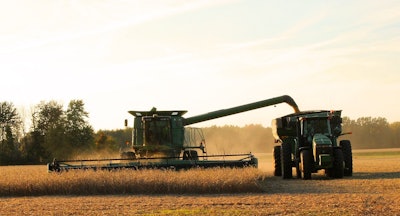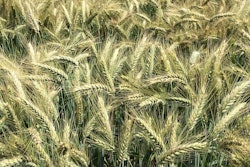
Soybeans and their products, such as soybean meal and soybean oil, are essential commodities in global agricultural trade. With soybeans accounting for nearly 9 percent of the total value of agricultural trade, it's crucial to understand the dynamics of soybean production, marketing costs, and export competitiveness between major players like Brazil and the United States. This article delves into a comparative analysis of these two countries, exploring factors that affect production costs, returns, and overall competitiveness in the soybean market. Constanza Valdes, Jeffrey Gillespie and Erik Dohlman's new report for the USDA, "Soybean Production, Marketing Costs, and Export Competitiveness in Brazil and the United States," reviews the differences in the two nations soybean economy.
Historically, the United States held the title of the world's largest soybean exporter. However, Brazil took the lead in marketing year (MY) 2012/13, exporting more soybeans than its American counterpart. Since then, Brazil's share of the global soybean trade has been on the rise. Projections suggest that Brazil's share could reach 60.6 percent between MYs 2021/22 and 2032/33, highlighting its increasing dominance in the market. Given that soybeans are Brazil's primary agricultural commodity export, with over 60 percent of its production being exported, it is crucial to assess its competitiveness against the United States.
Factors affecting production costs
One of the key aspects to consider when comparing soybean production costs between Brazil and the United States is the difference in farm-level operations. Brazil relies more on custom services for equipment and labor, while the United States tends to have farm ownership of machinery. Additionally, land costs are generally higher in the United States. Consequently, allocated overhead costs in Brazil are lower than in the United States. In 2021/22, the total costs per bushel of soybeans in the United States exceeded those in Brazil.
When comparing the average national farm-level production costs per acre for soybeans, Brazil had a significant advantage over the United States in 2021/22. With costs being 19.9 percent lower in Brazil, this difference is primarily due to lower land and capital costs. However, the United States compensated for higher per acre costs by achieving higher yields, particularly in its Heartland region. Despite the higher costs, Brazilian producers enjoyed higher national average returns per bushel over total costs compared to their American counterparts in 2021/22.
To evaluate the competitiveness of soybean exports, it is essential to consider transportation costs and infrastructure. The study found that the U.S. Heartland region was the lowest-cost exporter of soybeans, while Paraná in Brazil was the next lowest-cost exporter due to its proximity to ports and lower internal transport costs. Surprisingly, despite higher inland transport costs, Brazil's Mato Grosso State remained competitive with the United States in soybean exports, thanks to its lower costs of production.
Over the past decade, Brazil has made significant improvements in its overland transportation infrastructure, resulting in cost savings for exporting soybeans from Mato Grosso through southern ports. The average inland transport costs from MYs 2017/18 to 2021/22 decreased to $77 per metric ton, compared to $98 per metric ton from MYs 2008/09 to 2012/13. Additionally, the improvements in Central Brazil's overland transportation reduced truck rates, leading to a further cost reduction of $28 per metric ton and enhancing Mato Grosso's competitive position.
Alternative Export Routes
Another noteworthy aspect is the impact of alternative export routes on cost savings. Soybean exports from northern Mato Grosso to Shanghai, China, via the Santarém port in the north, resulted in a savings of $25 per metric ton in landed costs compared to exports via the traditional Santos port in the southern region. These alternative routes provide Brazil with additional advantages and contribute to its overall competitiveness in the global market.
The comparative analysis of soybean production, marketing costs, and export competitiveness between Brazil and the United States reveals important insights. While Brazil has been steadily increasing its share of the global soybean trade, the United States still maintains its position as a major exporter. The differences in production costs and returns reflect the varying dynamics of farm-level operations and infrastructure between the two countries. The improvements in Brazil's transportation infrastructure have played a significant role in enhancing its competitiveness, despite higher inland transport costs. As the soybean market continues to evolve, understanding these factors is crucial for both countries to maintain their positions and thrive in the global market.















